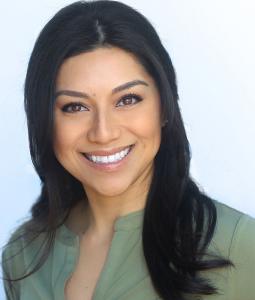 As the LANAP Clinician family continues to grow, our doctors play an important role in advancing the field of dentistry with forward thinking that puts the patient first. Each month, we will highlight a clinician to get their perspective on the state of dentistry, LANAP cases, and more.
As the LANAP Clinician family continues to grow, our doctors play an important role in advancing the field of dentistry with forward thinking that puts the patient first. Each month, we will highlight a clinician to get their perspective on the state of dentistry, LANAP cases, and more.
This month, West Los Angeles-based LANAP Clinician Cerisa Moncayo, DDS weighs in on challenges in the field, the role of technology in dentistry and the future of the field.
What do you find to be the most challenging part of being a dentist today?
The most challenging part for me is being a dentist-owner — the HR/human resources aspect is challenging and something that you can’t really learn, per se. As far as clinical dentistry, probably integrating technology and having it consistently deliver the results you want is a challenge. There is a learning curve, proper training and integration takes time, as well as a good team.
What are your patients’ most frequent reasons for refusing treatment?
Probably lack of urgency and lack of symptoms — we work with a generally older population. Most of our patients are very compliant and desire preventative treatment and want to avoid issues. For those patients who decline/refuse treatment, they usually decide that since they’ve lived for so many years with a certain problem, there’s not much reason to start treatment now. It makes us work smarter in terms of educating them, while not being aggressive in recommending treatment.
What are your pain points in integrating new technology into your practice?
Integrating new technology is a challenge when the technology has to “talk” to other aspects of your practice — practice management software, data/file transfer, or anything having to do with IT or existing systems. It’s a natural ebb and flow of any evolving practice, but we’ve found that it’s a constant struggle having everything properly function for a long period of time without issues. The moment there is an update, or even something as simple as a new printer that’s installed, it seems that something stops properly functioning. Luckily, we have a good IT team. ☺
Where do you see the field of periodontics going in five years?
What do you think needs to happen for patients to take their oral health (and, consequently overall health) more seriously? Patients will always struggle to take ownership of their own health, especially when it comes to dentistry. There are certain stigmas in dentistry that perpetuate– ‘my tooth didn’t hurt until you worked on it’…’it hurts to go to the dentist’….’I didn’t have any problems with my teeth until you told me I did’, etc. I believe that, as clinicians and providers, we need to step it up collectively to help patients take their oral health more seriously. A lot of that has to do with training. Many people graduate from their programs either not strictly trained in the areas of patient education, or for whatever reason, compromise the standards they were taught. A few things that would help would be: 1) Take the time to properly educate your patients so they learn to value oral health and hygiene, 2) Treat patients based on what they need, not what insurance companies say they need (of course you have to balance this with financial considerations), 3) Don’t compromise your values or deliver sub-standard care just to please a patient (doing so just teaches patients that it’s okay to compromise their oral health).
What do you think needs to happen for patients to take their oral health (and, consequently overall health) more seriously?
Patients will always struggle to take ownership of their own health, especially when it comes to dentistry. There are certain stigmas in dentistry that perpetuate — “my tooth didn’t hurt until you worked on it,” “it hurts to go to the dentist,” “I didn’t have any problems with my teeth until you told me I did,” etc. I believe that, as clinicians and providers, we need to step it up collectively to help patients take their oral health more seriously. A lot of that has to do with training. Many people graduate from their programs either not strictly trained in the areas of patient education, or for whatever reason, compromise the standards they were taught.
A few things that would help would be: 1) Take the time to properly educate your patients so they learn to value oral health and hygiene, 2) Treat patients based on what they need, not what insurance companies say they need (of course you have to balance this with financial considerations), 3) Don’t compromise your values or deliver sub-standard care just to please a patient (doing so just teaches patients that it’s okay to compromise their oral health).
Dr. Cerisa and her husband Dr. Max practice in the Pacific Palisades area of Los Angeles as a general practitioner and oral surgeon, respectively. Both are LANAP certified. Visit them at thepalidentists.com and palisurgicalarts.com. You can also follow @thepalidentists on Instagram.
Interested in being featured in the Future of Dentistry Spotlight? Contact us at social@lanap.com.


Leave a Reply